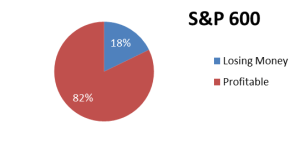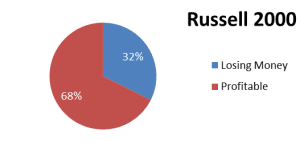[vc_row][vc_column width=”1/4″ offset=”vc_hidden-xs”][vc_widget_sidebar sidebar_id=”sidebar-main”][/vc_column][vc_column width=”3/4″][vc_column_text]
Even the novice investor understands the importance of breaking asset classes into importantly distinctive categories like small and large, growth and value. After that step though, discarding the various ways in which those categories can be measured by various indices is all too easy. One might simply think – “A mid cap index is a mid cap index” – (and by “one” at this point I am often referring to me!) And that type of thinking isn’t all bad since we have limited time and resources for gathering information and making decisions, and the asset class distinction itself is nearly always going to be the bigger issue. But, sometimes taking the extra step in being careful as to which index to use can pay extra dividends. This is especially true in small cap stocks where the (much older) Russell 2000 is the granddaddy of indices in this space with the S&P 600 taking on the role of stepchild.
The two indices are measured differently with the Russell 2000 casting a wider net. They both represent similar sizes of companies, with both indices having a median market cap between $1 billion and $2 billion. The Russell 2000 methodology, though, is much more apt to catch companies that are on their way down as opposed to their way up. Think of it this way, companies that are up and coming will at one point be small on their way to being big. Companies that are severely struggling can also be small caps on their way to being non – existent. Those are two clear different paths. In maybe the clearest difference between the two, check out the profitability profile. Over the trailing 12 months, I find about 18% of the S & P 600 as having negative earnings while nearly 1 out of 3 in the Russell 2000 does so. For reference, just 11% of the S & P 500 had negative earnings.


This isn’t to say you always want to own the “higher quality” as anything can be attractive at the right price. When exiting more depressed situations, the Russell 2000 can be more poised to rebound a little harder. Over the long run, though, the S & P 600 has materially outperformed the Russell 2000, and has done so with less volatility. A study by Morningstar and IFA shows the S&P 600 returning 11.1% from 1994 through 2013 vs. 9.3% for the Russell 2000. Meanwhile, the standard deviation was slightly smaller in the S & P (18.8 vs. 19.7).
Source: Small-Cap Face-Off: Russell 2000 vs. S&P 600 (IFA)
Disclaimer: Do not construe anything written in this post or this blog in its entirety as a recommendation, research, or an offer to buy or sell any securities. Everything in this post is meant for educational and entertainment purposes only. I or my affiliates may hold positions in securities mentioned in the blog. Please see my Disclosure page for full disclaimer.
[/vc_column_text][/vc_column][/vc_row][vc_row][vc_column offset=”vc_hidden-lg vc_hidden-md vc_hidden-sm”][vc_widget_sidebar sidebar_id=”sidebar-main”][/vc_column][/vc_row]



